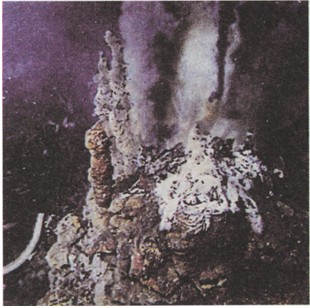人教高中英语高二下UNIT13-3
搜索关注在线英语听力室公众号:tingroom,领取免费英语资料大礼包。
(单词翻译)

LIFE IN THE OCEAN
The earth's oceans can reach depths of up to 11,000 metres. That is deep enough to cover Mt Qomolangma! The oceans are incredibly large and contain several different habitats. To make it easier to describe the various parts of the oceans, marine1 scientists usually divide the oceans into five zones. Each zone is different mainly as a result of how much sunlight reaches it.
Most of the life in the ocean can be found in the first zone, which begins at the surface and goes down about 200 metres. Because there is sunlight at this level, plants are able to grow. Marine animals such as dolphins, sharks, sea turtles and sea lions, and of course a variety of fish, live in the sunlit part of the ocean. It is difficult to hide from other animals in this area, but many species2 have adapted by becoming dark on the top and light on the bottom. This makes it difficult to see them against the dark water below and the blue sky above.
The second zone starts at 200 metres and goes down to about 1,000 metres. Some sunlight can reach this level, but it is not enough for plants to grow. Because this zone is relatively3 dark, many of the creatures that live here are able to make light with their body: The light from these animals makes the water look like a sky with moving stars in it.
The third zone of the ocean is dark. This place, about 3,000 metres deep, may not seem a likely habitat, but there are more creatures here than one might think. Most of the animals that live here are black or red because of the lack of light. At this depth, a slow shower of what looks like snow is falling. This phenomenon, called "marine snow", is actually nutrients4 falling towards the bottom of the ocean. It is an important source of food for the creatures that live in the deep.
Below 4,000 metres, the temperature is near freezing and there is no light at all. In fact, the zone is so dark and empty that scientists named this zone after the Greek word for "no bottom". There is not much life to be found in this cold and unpleasant part of the ocean, but some small creatures still manage to survive here despite the high water pressure. Few of the animals in the ocean can dive this deep. One exception5 is the sperm6 whale, which slows its heartbeat in order to reach this zone as it hunts for food.
The very deepest part of the ocean is found 2,000 metres further down. At this depth, the water pressure is extremely high and life is very difficult for the few creatures that live here. Compared to the other zones, this one has very little life. Since there is no light here, some of the animals do not have eyes. When scientists explored the very deepest parts of the ocean, they did not expect to find any life at all. However, it turned out that there are creatures that can live even in habitats as far down as 10,000 metres. They usually survive by living close to deep sea vents7, "chimneys8" that send out gases from within the earth. Unlike all other living things on the earth, which get their energy from the sun, the creatures that live here use chemicals from the vents to stay alive.
Next time you look at the ocean from the beach or on a map, remember that what you are seeing is only the surface -- only the beginning of the large and varied9 adventure that is the ocean.

 收听单词发音
收听单词发音 




